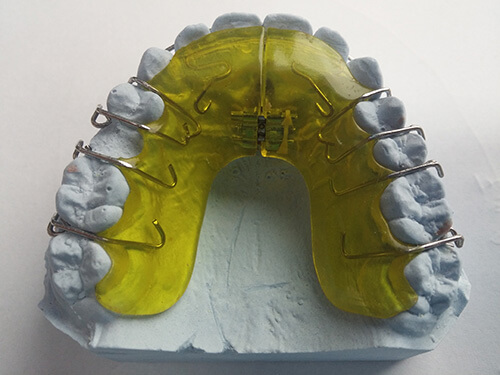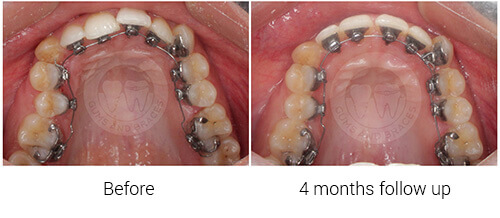Orthodontics involves ‘moving’ the teeth into their correct positions by applying mild, but continuous forces on them. Most often, the people approaching us for this treatment want to ‘correct’ and ‘beautify’ their smile, for e.g.: buck teeth (teeth being too far ahead), criss cross teeth, gaps in teeth, teeth out of place, etc. and orthodontics is one of the most conservative approaches to achieve the same. However, the scope of orthodontics is not limited to smile designing. Orthodontics also involves correcting an improper bite, correcting jaw deformities, resolving issues with TM joint or the jaw joint. There are various approaches to do this, including the popular ‘invisible braces’ (lingual braces and clear aligners).
1. Removable Appliances: These are appliances which can be removed by the patient at will. They are usually used to correct skeletal problems in young children, (deficient or over growth of jaws) potentially avoiding any extensive surgical treatment which may be required at a later age. Besides, they can also be used to correct minor spacing and tooth irregularities.

2. Fixed Appliances: As the name suggests, these involve use of ‘brackets’ which are fixed onto individual teeth with a special dental adhesive or glue and cannot be easily removed by the patient. The brackets act as ‘door handles’ for the teeth, transmitting the various forces applied by means of wires, elastics and springs onto the teeth, thus causing tooth movement. More extensive tooth movement generally necessitates their use. These are of 3 kinds.
a. Metal braces: This is what comes to mind when somebody says ‘braces’.

b. Ceramic (tooth coloured) braces: Virtually invisible to a casual eye, these offer a good and reasonable alternative for young adults wanting to avoid the ‘metallic smile’ that comes with conventional braces.

c. Lingual braces: These are placed on the inner surfaces of the teeth, and thus, totally invisible to everybody.

3. Clear Aligners: These are a series of removable appliances, made of a clear plastic to be worn for at least 20 hours a day to bring in the desired tooth movement. These are virtually invisible and offer a more comfortable alternative to fixed braces.



